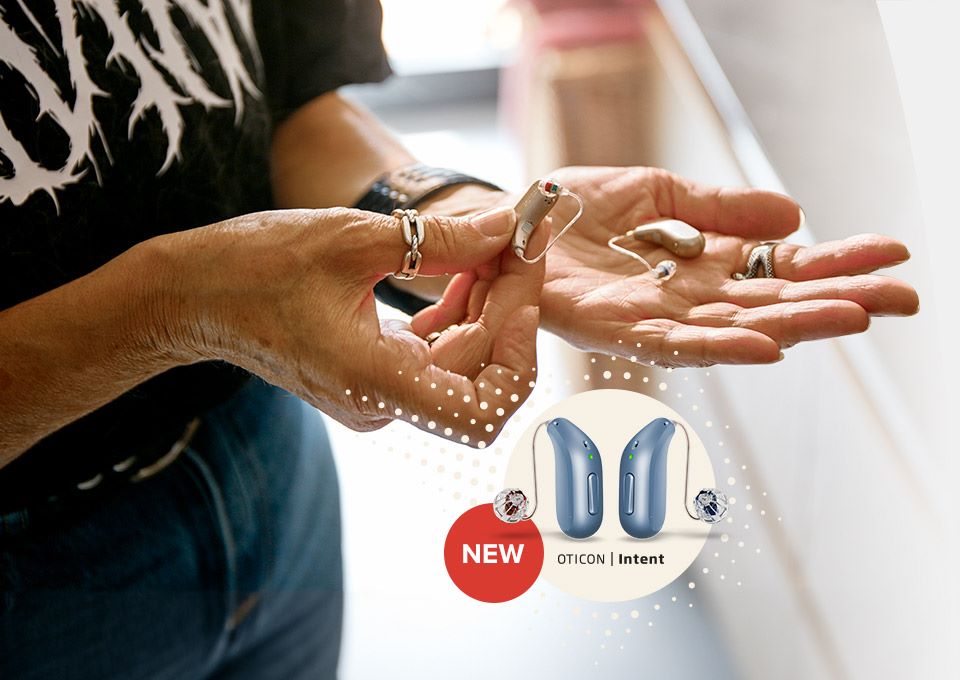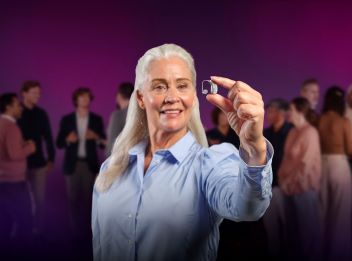In February 2024, we introduced our most advanced hearing aid yet: Oticon Intent™.
Oticon Intent™ has been built on a brand-new microchip platform, Sirius™, which has been designed specifically for hearing aids, unlike many other hearing aid brands, who borrow and adapt existing microchips from other industries.
Oticon Intent™ continues the journey of open sound that Oticon hearing aids have been on since the Opn was released, back in 2016.
![]()
The next-generation of hearing aids
The Opn (2016) was designed to open up the 360° sound scene for hearing aid users.
The Opn S (2019) gave users an improved experience, giving them more consistent sound and reducing feedback. And the Oticon More™ (2021) was the first hearing aid to feature a Deep Neural Network (DNN) on the chip, using artificial intelligence for an even more natural listening experience.
Finally, the Oticon Real™ (2023) helped reduce interruption from disruptive and sudden sounds that we experience everyday – like the wind, a slamming door, adjusting your glasses etc. – giving users a more comfortable listening experience.
But the Oticon Intent™ goes even further. Because despite all the progress made, all these hearing aids have something in common. In noisy environments, they analyse the sound scene and deliver what they think to be the optimal experience to the hearing aid user.
86% of hearing aid users have trouble hearing conversations in noisy environments[1]
However, in a noisy environment, people can have very different intentions. One person might be walking through a crowd, looking for a friend. Another might be having an intimate, one-to-one conversation, while a third might be chatting with a group of friends.
All previous hearing aids understand sound, but not the user. And this is where the new hearing aid tech inside Oticon Intent™ excels.
Introducing 4D Sensor technology
Researchers at Oticon recognise that head and body movement are the key to communication intent. And sensors worn behind the ear can give us this information. Oticon Intent™ has been fitted with 4D Sensor technology – it analyses your conversation activity and the acoustic environment, as well as your head and body movement – to give you access to the sounds that you want to hear.
![]()
For example, when you’re in a one-to-one conversation, you’ll be moving your head less, so the Oticon Intent™ will prioritise the sound coming from right in front of you.
In a group conversation, when you’re constantly moving your head to focus on the speaker, Oticon Intent™ knows to prioritise speech. And when you’re walking, it’ll prioritise your surrounding environment.
Oticon Intent™ also features an all-new Deep Neural Network (DNN), a type of artificial intelligence that is embedded directly onto its chip. This DNN has learnt to process sounds in the same way we do – through experience – so it knows what sounds you want to hear.
And when you combine the 4D Sensor technology, the brand new Sirius™ chip and the DNN, you could get up to 35% more access to speech than previous hearing aid technology2.
![]()
Oticon Intent™ is now available at Hidden Hearing. Follow the link to find out more about what this next-generation, latest hearing aid technology could do for you and your hearing.
Or, to try Oticon Intent™ hearing aids at a clinic near you, book your free, no-obligation hearing test today.






